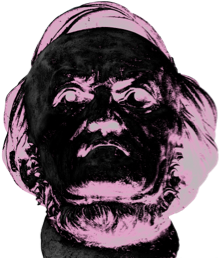Wagner Contra Viola
By Daniel Orsen
Welcome to the first essay of Wagner’s Nightmare; a tongue-in-cheek send up to Herr Wagner, der Meister, die Zauberer von Bayreuth. That’s the spirit of the endeavor. The substance of it will be a series of recordings and essays, culminating in a full-length album, all centered around things Wagner didn’t like, of which there were many; aristocracy, organized religion, the French, beer bottles, Giacomo Meyerbeer, Prussian militarism, carnivorism, Jews, and last and quite possibly least, the viola, were just a few of the targets of Wagner’s animus.
So, what was Wagner’s beef with the viola?
In the 19th century there were no violists, there were only tall violinists and bad violinist who were exiled to the viola section. Hence, Herr Wagner only heard the viola played poorly. This is reflected in his viola parts, which consist of four types of music:
Simple and unexposed accompaniments or harmonic filling.
Difficult passages that are always doubled by at least the violins or cellos.
Melodic material on the C string. I suspect Wagner would have used the violin or cello if he could have (in the cello’s case that’s a matter of timbre). Examples include the end of Act 1 of Parsifal and the forging music heard first with the Nibelungs in Rhinegold, and later when Mime and Siegfried are going at it hammer and tongs in Act 1 of Siegfried.
For “Jewish” characters, such as Sixtus Beckmesser (Meistersinger) and the aforementioned Mime and the Nibelungs.
Since Wagner figured that everybody playing the viola would be bad, he thought he might as well have tall people playing extra large violas to get the best sound possible. Frankly, not a bad strategy. Enter Hermann Ritter, a rather remarkable violist, composer, and music historian. Ritter started life out as a violinist, switched his focus to the viola and musicology, and then set out to raise the standard of viola performance and make instruments “tonally equal” to the violin and cello.
Here a short acoustical detour is necessary. The viola sounds a fifth lower than the violin; the corresponding proportion is 3:2. The body of a violin (the hourglass looking part with the red varnish) is about 14-inches (36 cm) long, so the body of a viola should be 21-inches (53 cm) long. The problem is that that is too big to play like a violin, and too small to play like a cello, so violas are usually between 16 and 17-inches (40-43 cm) long and played like a violin. This acoustical misshapenness is responsible for the beguiling timbre of the viola and a long history of experimentation in viola design.
Ritter was one of those experimenters, but he shouldn’t be credited with too much creativity. After all of his research into the history of instrument building he simply designed a model for a 19-inch (48 cm) viola, 4:3 of the standard violin size, and had it built by a luthier.
In February 1876, half a year before the premier of the Ring Cycle, Ritter presented his Viola Alta (as he called it) to Wagner, performing “Lied an den Abenstern” from Tannhauser. Wagner was impressed, exclaiming, “The right alto instrument!” Ritter was immediately hired as the first solo violist of the Bayreuth Festspiel Orchestra, the hands of the viola section were filled with Viola Altas, and by 1889 five of Ritter’s students were members of the viola section. It seems fitting that the premiere of the Ring, which had a bigger opera house, a bigger orchestra pit, a bigger orchestra, a Wagner tuba, a Wagner bell, a Stierhorn (an actual Steer Horn), Anvils, a Bass Trumpet, a Contrabass Trombone, and six harps, also had bigger violas.
The Viola Alta’s first (and possibly last?) official appearance in an orchestral score was Parsifal, under the German name Altgeige (two other names this instrument has picked up over the years are the “Ritter Viola” and the “Wagner Viola,” which has an especially nice ring to it, pun intended). A surprisingly large and largely unknown body of solo music was written or transcribed for the Viola Alta. The Wikipedia entry for Ritter lists 21 original compositions and 59 transcriptions for the Viola Alta (as well as 30 musicological prose publications). Felix Draesecke wrote two hefty sonatas for the Viola Alta, the first of which commemorates Wagner’s death, Hans Sitt’s Fantastiestucke is a charming work dedicated to Ritter, and Franz Liszt got in on the action at the end of his life by transcribing his piano piece, Romance Oubliée, which he also dedicated to Ritter.
Whither the Viola Alta? Ritter saw his dream of a rising standard of viola playing come true, but this was, ironically, the downfall of the Viola Alta. A 19-inch viola was simply too big, even for the lankiest of men, to both attain the heightened standards of technical excellence in orchestral and chamber music, and to handle the demanding solo parts now being written for the viola. Thus, construction of Alta Violas fizzled out in the 1920s.
By now most Viola Altas have been cut down to be smaller and more playable. I have met one Viola Alta, played by David Holland, a retired viola teacher at Interlochen and a very tall man, and even his viola had been cut down. He plays one of the earliest Viola Altas which was used in the Bayreuth Orchestra during Wagner’s lifetime.
As you can probably tell from our recording of Ritter’s Music in den Alpen, Pierre-Nicholas and I are going to have a lot of fun with the Viola Alta repertoire over the coming months. It is a sentimental, schlocky, and silly repertoire. So Wagner’s Nightmare begins!
Bibliography:
Smith, Carl. “Hermann Ritter and his Viola Alta.” https://www.corilon.com/us/violas/ritter-viola-viola-alta-markneukirchen-circa-1910. Music4Viola. Web. 9 July 2021.
“Hermann Ritter.” https://en.wikipedia.org/wiki/Hermann_Ritter. Wikipedia. 27, Nov. 2020. Web. 9 July 2021.
“The Instruments of the RING.” https://www.lyricopera.org/lyric-lately/Instruments-of-the-RING/. Lyric Opera of Chicago. 25, April 2020. Web. 6 December 2021.
